#fenimore art museum
Explore tagged Tumblr posts
Text
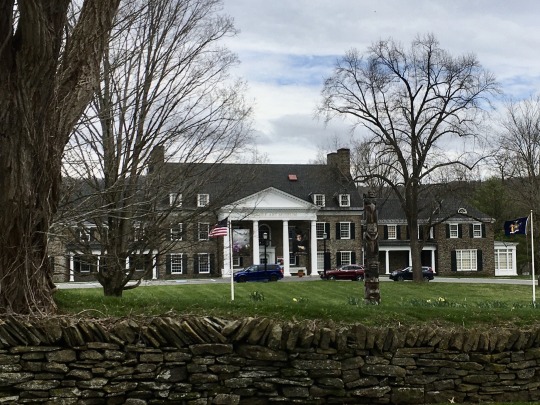
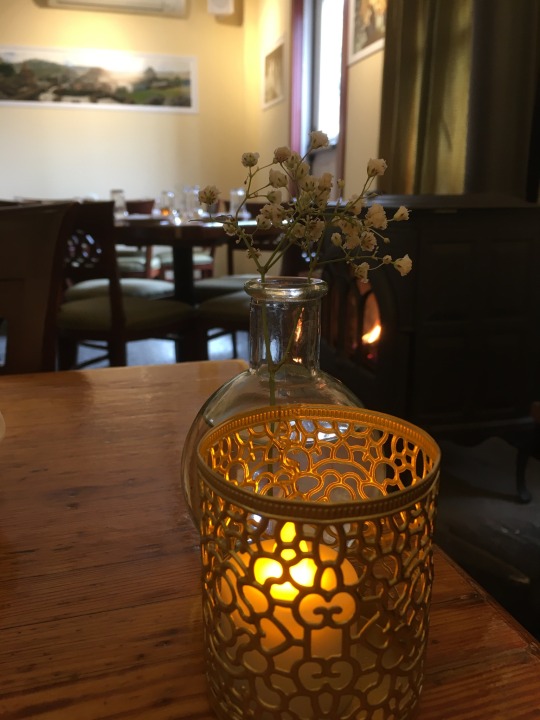
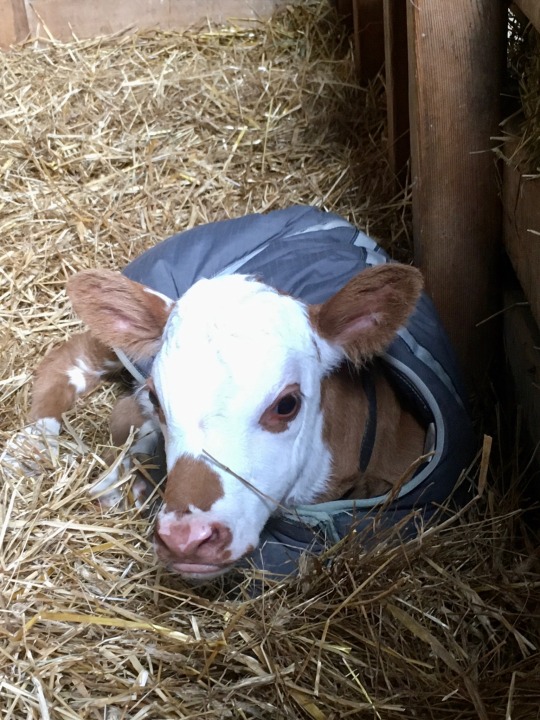
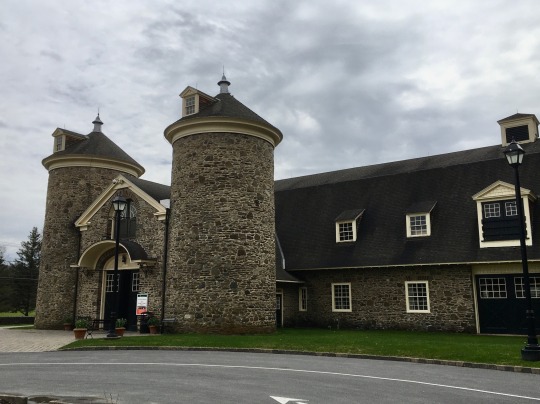
Friday, April 19, 2024 - Vacation Day 5
I took a drive out to Cooperstown today to have lunch with a friend. It was a very nice visit and I got to meet the Farmers’ Museum’s brand new three-day-old baby cow.
#curator#vacation#cooperstown#norbu nepalese indian restaurant#fenimore art museum#farmers museum#cow#farm#roadtrip
4 notes
·
View notes
Text

dress by Mrs. Walking Sun, Nadoka (Assiniboine), 1941, The Royal Ontario Museum

Chief American Horse's Outfit, 1900-1913, The McCord Museum

Chilkat robe, Tlingit, 1860, The Fenimore Art Museum


Inuit Girls

Three Blackfeet Chiefs

Wet'suwet'en hereditary chiefs protesting

Cree women in powwow regalia

White men in Canadian Tuxedos
youtube
187 notes
·
View notes
Text

The Last of the Mohicans
Artist: Emanuel Gottlieb Leutze (German-Born American, 1816-1868)
Date: 1850
Collection: American Museum of Western Art, Denver, Colorado, United States
Description
This painting depicts a scene from James Fenimore Cooper’s The Last of the Mohicans. This book became symbolic of Euro-Americans’ perceptions of and feelings toward Native Americans at the time. From when the book was published in the 1820s through the time when Leutze painted this in 1850, Native Americans were being relocated away from their ancestral homes to the West in order to accommodate a growing Euro-American population. Many Euro-Americans at the time considered Native American cultures to be noble and traditional, and feared they were quickly becoming extinct.
The artist, Emanuel Leutze, spent much of his career creating a grand narrative painting tradition of the Americas. His work highlighted key events in history and episodes from American literature.
#painting#american literature#the last of the mohicans#james fenimore#american writer#native american#man#standing#full length#landscape#eagle#american history#fine art#emanuel gottlieb leutze#american painter#american art#american culture#19th century painting#oil painting#artwork
25 notes
·
View notes
Text

Another pre-Regency piece. Notice the way the center front closes on drawstrings at the neckline and at the high waist, and the way the back of the skirt is done in reverse box pleats - both of these are characteristic of dressmaking ca. 1800 and not during the Regency proper.


If you were so inclined, you could reproduce this almost exactly by using the front of the drawstringed morning gown and the back of the trained bib-front gown in Regency Women's Dress (both garments from the Fenimore Art Museum's collection).
18 notes
·
View notes
Text
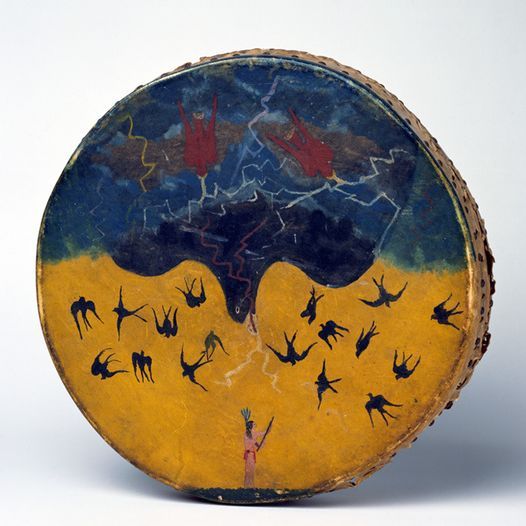
Shaman’s Ceremonial Drum with Ravens, (ca 1850) Absaroka.
George Beaver (Chahiksichahiks (Pawnee))
DRUM, 1890
Rawhide, wood, blue, pigments, iron nails, tacks, pigments
Overall: 3 1/2 × 18 in. (8.9 × 45.7 cm)
Gift of Eugene V. and Clare E. Thaw
Photograph by John Bigelow Taylor, NYC
Fenimore Art Museum
37 notes
·
View notes
Text

The real face of John Quincy Adams - 1825 life mask. In the daguerreotype photographs depicting John Quincy Adams, we observe an elderly gentleman sporting white hair and mutton chops (sideburns). Nevertheless, back in 1825, during his presidential term, Adams had brown hair and a clean-shaven face. In that very year, John Henri Isaac Browere immortalized Adams' appearance at the age of 58 by creating a life mask. Adams mentions Browere in his diary, August 30: "Browere, is a sculptor who has made at New York a bust of General Lafayette, and proposes to take bust of all the presidents." Adams was unable to sit for Browere in August because he returned home to Massachusetts for a while. In October, when Adams was back in Washington he sat for Browere. Adams mentions Browere in two short diary entries: "At Browere's. He took my bust." (October 29) and "Browere. The bust finished. (November 5). The mask itself was taken on the first date and the finished bust was ready for display a week later. Browere has given us a rare image of John Quincy Adams smiling. When Horatio Greenough modeled a bust of Adams a few years later, he wrote, "I shall not attempt to make him look cheerful. He does not and cannot. Gravity is natural to him, and a smile looks ill at home." But Adams's smiling visage in Browere's portrait is surely due to the sitter and not the artist." The Fenimore Art Museum, located in Cooperstown, New York, houses the majority of Browere's life mask busts. Although the bust of John Quincy Adams is currently not accessible for public viewing, it is safely stored within the museum's collection.
#founding fathers#presidents#american history#american revolution#amrev#john quincy adams#john adams#founding son
20 notes
·
View notes
Link
Angelina Jolie's photo will be displayed at Fenimore Art Museum
0 notes
Text


Evening dress, 1910s. The Fenimore Art Museum.
1 note
·
View note
Text

Mermaid, from a sculpture at the Fenimore Art Museum
1 note
·
View note
Text
Oscar Wilde in Sharon Springs
Oscar Wilde in Sharon Springs
Oscar Wilde in Sharon Springs, 1882—2022 One could be forgiven for thinking that an article entitled Oscar Wilde in Sharon Springs is about Oscar Wilde in Sharon Springs, meaning his lecture there on August 11, 1882—not an unreasonable assumption. But latterly such an conclusion would be only half right, because earlier this year the spirit of Oscar Wilde materialized once more in the small…
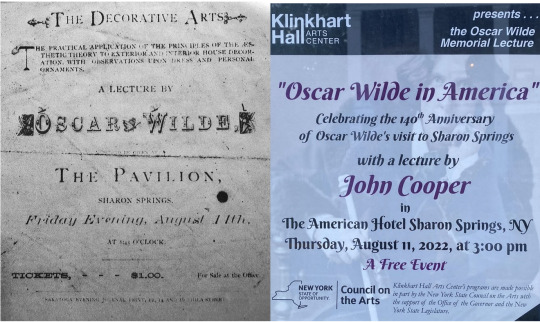
View On WordPress
#American Hotel#Catskills#Cooperstown#Fenimore Art Museum#Klinkhart Hall#oscar wilde#Paul Muldoon#Pavilion Hotel#sharon springs
0 notes
Text
The Decade Past

*********************
In my picture of the world there is a vast outer realm and an equally vast inner realm; between these two stands man, facing now one and now the other, and, according to temperament and disposition, taking the one for the absolute truth by denying or sacrificing the other.
—Carl Jung
*********************
Time flies.
We’re looking at another decade slipping away. I…
View On WordPress
#Carl Jung#Cooperstown NY#Fenimore Art Museum#GC Myers#Painting#Quote#Red Tree#The Internal Landscape
0 notes
Text


Evening dress, 1910s. The Fenimore Art Museum.
210 notes
·
View notes
Text
American Oz: The Lakota Ghost Dance and the Massacre at Wounded Knee
How the American drive to force Indian assimilation turned violent on the plains of South Dakota.
�� April 16, 2021 | Louis S. Warren | From the Collection: Native Americans

Native Americans performing ritual Ghost Dance. One standing woman is wearing a white dress, a special costume for the ritual dance, 1890. Photo by James Mooney, an ethnologist with US Dept. of Interior. Alamy
Editor’s Note: When L. Frank Baum and other white settlers arrived in Aberdeen, South Dakota in the 1880s, they were entering land that had been part of the homeland of the Western Sioux or Lakota. On the Standing Rock and Pine Ridge reservations west of Aberdeen, conditions were dire for the over 10,000 Lakota living there. In the following excerpt from God’s Red Son: The Ghost Dance Religion and the Making of Modern America, Louis S. Warren recounts the Lakota struggle to resist assimilation and survive in the face of violent suppression from the administration of President Benjamin Harrison.
In the west, drought had baked the earth bare. Indian reservations occupied poor land that had little game and few wild plants of any use. In the withering heat, what grass was left by cattle and sheep (most of them owned by white ranchers) quickly shriveled. Scarce game vanished. By 1885, many Indians had turned their hand to farming, but in 1890 their crops wilted. Starvation, that old monster, circled the camps.
It was thus not surprising that some Indians had turned to a new faith. In doing so, Indian believers unwittingly launched upon a collision course with the anxious American public. What swept the West that summer was an evangelical revival that synthesized ancient Indian beliefs with new millenarian teaching. Strange stories made their way from neighbor to neighbor, from one people to the next, stories of distant laughter on the breeze, dead loved ones brought back to life, and an earth again made green and bountiful.
Bison hunting had ceased by the early 1880s, for the animals were nearly extinct. The only survivors of the great herds were living in Yellowstone National Park in Wyoming, on a few private ranches far to the south or in Canada, and in zoos and traveling Wild West shows. But in 1890, in the midst of the drought, a few of the shaggy beasts appeared suddenly on one of the Sioux reservations in South Dakota. Had the spirits returned their favor? How else could one explain this miraculous event?
Stories like these spread among friends and acquaintances, raising unanswerable questions and inspiring new faith. And all that fall, Indians danced. They danced from the deep Southwest to the Canadian border and into Alberta. They danced from the Sierra Nevada to eastern Oklahoma. They danced in southern Utah, and in Idaho. They danced in Arizona.
In Nevada, a thousand Shoshones danced all night, and as the eastern sky turned pale shouts rang out that the spirits of deceased loved ones were appearing among the faithful. A thousand voices shouted in unison, “Christ has come!,” and they fell to the ground, or perhaps to their knees, weeping and singing and utterly exhausted. Although many had dismissed the springtime talk of a messiah somewhere in the mountains of western Montana, the rumor seemed only to grow over time. From the Southwest to the Wind River Mountains of Wyoming and on into the plains of South Dakota, Indians spoke of a redeemer to the north.

Ghost Dance Drum by George Beaver, wood, rawhide and pigment, late 1890s, Fenimore Art Museum. Public Domain
By the fall of 1890, authorities who read the telegrams and heard the reports had become uneasy. Thirty Indian reservations were transfixed by the prophecies of the Messiah, but the teachings had a particularly enthusiastic following among the Lakota Sioux, also known as the Western Sioux. Because of the relatively recent history of US hostilities with these people—the notorious Sitting Bull was learning the new faith—it was there that government agents soon focused their attentions.
It is almost impossible to overstate how vehement officials and other Americans eventually became over the need to break up the dances. Of all the features of the new ritual that garnered commentary, the physical excitement of the dancers received the most attention. The central feature of the Ghost Dance everywhere was a ring of people holding hands and turning in a clockwise direction—“men, women, and children; the strong and the robust, the weak consumptive, and those near to death’s door,” as one observer described them. Lakotas had grafted onto the Ghost Dance some symbols of their primary religious ritual, the Sun Dance. Thus, Sioux believers felled a tree, often a young cottonwood, and re-erected it at the center of their dance circle. On it they hung offerings to the spirits, including colored ribbons and sometimes an American flag. Near the tree stood the holy men, supervising the event and assembling the believers, who began by taking a seat in the circle around the tree. There was a prayer, and sometimes a sacred potion was passed for participants to drink. Then dancers might together utter “a sort of plaintive cry, which is pretty well calculated to arrest the ear of the sympathetic.” Once these preliminaries were completed, the dancers rose and started singing—unaccompanied, without drums or other instruments—and the circle began to turn.
Astonished and disturbed by the enthusiasms of the ritual, some American witnesses were moved to dire warnings. One agent reported that the Indians favored “disobedience to all orders, and war if necessary to carry out their dance craze.” “The Indians are dancing in the snow and are wild and crazy,” hyperventilated the agent at Pine Ridge. Another denounced the actual dance as “exceedingly prejudicial” to the “physical welfare” of the Indians, who became exhausted by it. “I think, “the agent went on, “steps should be taken to stop it.” Fearful that unconscious women might be molested, one white witness at Pine Ridge claimed that women “fall senseless to the ground, throwing their clothes over their heads, and laying bare the most prominent part of their bodies, viz., ‘their butts’ and ‘things.’” Concluded still another, “The dance is indecent, demoralizing, and disgusting.”

Bird's-eye view of a large Lakota camp of tipis, horses, and wagons--probably on or near Pine Ridge Indian Reservation. Photographer John C. H. Gabriel, 1891. Library of Congress
For these observers, the dance was a physical manifestation of irrationality, a refusal to be governed in body or in spirit by the codes of Victorian decorum handed down from missionaries. In one sense, at least, this view was substantially correct. For the Lakota and for other Indians, however, the Ghost Dance was both strikingly new—even radical—and reassuringly familiar. Ghost Dancers were searching for a new dispensation, seeking to restore an intimacy with the Creator that seemed to have vanished. And for followers, the religion’s key attractions included the chance to worship in a form that reconstituted Indians as a community and expressed their history, families, and identity—in a word, their Indianness. The Ghost Dance invited believers, as one Sioux evangelist put it, to “be Indians” again.
The real "messiah craze" of 1890 was the fixation of Americans on Indian dancing and their relentless compulsion to stop it, and the root of that craze was this American passion for assimilation, which was, after all, every bit as millennial a notion as the Second Coming itself. What more utopian a dream could there be for a rapidly globalizing society riven by fractures of race, culture and class than that a day would come when differences between people had simply disappeared? So it was that, in a show of hostility to physical exaltation reminiscent of the Puritans, policymakers waged war on Indian dances. In 1882 US Secretary of the Interior Henry M. Teller issued new orders to suppress “heathenish dances, such as the sun dance, scalp dance, &c.,” in order to bring Indians into line with conventional Christian practice.
The situation was all the more frustrating because it should have been easy. Indians had practically no power. They held no citizenship and remained federal subjects unable to vote. With no political representatives, they depended on appointed officials—reservation supervisors known as “Indian agents”—for their very survival. Dawes and others believed that education, example, and compulsion could turn Indians into good citizens. If Congress would mandate (and Indians agents would follow) a stern policy of assimilation, surely it would “kill the Indian and save the man,” as one prominent assimilationist put it. Thus would Indians enter the fold of the civilized, pointing the way for millions of immigrants and African Americans and preparing the ground for that glorious day when all dark skins would somehow whiten and racial strife would vanish.

The Ghost dance by the Ogallala [sic] Sioux at Pine Ridge Agency, Frederic Remington, Pine Ridge, S. Dakota, 1890. Library of Congress
For Americans, then, the challenge of assimilation was the great social question whirling at the center of the Ghost Dance of 1890. A millennial enthusiasm for assimilating others, as well as a deep anxiety that they might refuse to be assimilated, explains much of what made the Ghost Dance so troubling. To most white Americans, the dance itself was proof that assimilation had failed to dampen the savage impulse and that America’s irresistible conquest might prove resistible after all. In this light, the dances in South Dakota were more than just dances, and more than another Indian uprising. For Americans, something more, much more, was on the line.
Still, well into the fall of 1890, Ghost dances were nothing more than a curiosity, titillating fare for newspaper readers in distant cities. Although the dances had increased in intensity early in the fall, officials on the scene were mostly unconcerned. As late as the first week of November, only one Indian agent in South Dakota had requested military intervention; the others believed that the dance would die out of its own accord. Most local newspapers carried little to no news of the Ghost Dance.
But on November 13, President Harrison ordered the army into the Sioux reservations to shore up beleaguered officials and prevent “any outbreak that may put in peril the lives and homes of the settlers of the adjacent states.” With one-third of the entire US Army descending on some of the most remote and impoverished communities in the United States, the “Ghost Dance War” quickly became the largest military campaign since Lee’s surrender at Appomattox.
The arrival of columns of soldiers panicked the Indians and, in conjuring the possibility of war, terrified many settlers, who until that moment had not felt threatened. After treating the Ghost Dance mostly as a curiosity, the press now sank to new lows, riveting a considerable portion of the nation’s 63 million people with stories about imminent “outbreaks” by bloodthirsty savages—never mind that fewer than a quarter of a million Indians remained in the United States, and only 18,000 of these were Lakota Sioux. Never mind that there were only about 4,200 Ghost Dancers, and that most of them were children, their mothers, and the very old. The New York Times quoted estimates of 15,000 “fighting Sioux,” and others picked up rumors of an impending Sioux “outbreak.” Some even reported that thousands of armed Indians had surrounded the reservation and killed settlers and soldiers.

Sitting Bull by D F Barry, 1883 Dakota Territory, Public Domain
In mid-December, James McLaughlin, the agent at Standing Rock Reservation (some 275 miles north of Wounded Knee), sent the Indian police to arrest Sitting Bull, the most renowned Lakota chief still living. McLaughlin had long harbored a personal grudge against Sitting Bull. Now, since Sitting Bull had allowed Ghost Dances to take place at his camp, McLaughlin hoped to exploit the Ghost Dance tumult to have him removed from the reservation. When the detachment arrived at Sitting Bull’s home at dawn on December 15 and took him into custody, however, some of Sitting Bull’s enraged followers opened fire, and in the conflagration that followed the police shot the famed chief in the head and chest. The killing of Sitting Bull sent waves of panic and fear across the reservation, and when Lakota Indians there and at other reservations heard the news, they began to crisscross the countryside looking for refuge from the troops.
So it was that on December 28 a starving band of Ghost Dancers who had fled their homes on Cheyenne River Reservation surrendered to Colonel James Forsyth’s Seventh Cavalry at Wounded Knee Creek. The next morning troops upended Sioux lodges in a hunt for weapons. Two soldiers were attempting to seize a weapon from a Lakota man when it discharged. No one was hurt, but it did not matter. The ranks of soldiers opened fire. With four rapid-fire Hotchkiss guns on the edges of the ravine, Custer’s old regiment loosed an exploding shell nearly every second from each of the big guns—and a fusillade of rifle and pistol fire besides—into the mass of mostly unarmed villagers below. Indian men who were not instantly cut down did their best to fend off the troops with a few guns, some knives, rocks, and their bare hands as the ranks of women, children and old people fled up the creek.
Among the Sioux men at Wounded Knee were a handful of the continent’s most experienced close-range fighters, and when the conflict was over, the army did not emerge unscathed. The Seventh left the field with dozens of wounded, and thirty troopers died. The army took thirty-eight wounded Indians with them but left the Indian dead and more of their wounded to the mercy of the Dakota sky. As night fell, winter descended in all its high-country fury. Temperatures dropped far below freezing, and a fierce blizzard howled in from the north. Corpses turned to ice. When soldiers and a burial party returned three days later, they found several wounded Lakotas yet clinging to life and some surviving infants in the arms of their dead mothers. All but one of these babies and most of the others soon succumbed.
Soldiers heaped wagons with the Indian dead, who looked eerily like the haunting plaster casts of the Pompeii victims of Mount Vesuvius, some having frozen in the grotesque positions in which they had hit the ground. Others were curled up or horribly twisted, their hands clawing at the air and mouths agape, each a memorial to the agony of open wounds, smothering cold and the relentless triumph of death. A photographer arrived to take pictures (which immediately became a popular line of postcards).

Big Foot's camp three weeks after the Wounded Knee Massacre with bodies of several Lakota Sioux people wrapped in blankets in the foreground and U.S. soldiers in the background, Dec. 29, 1890. Library of Congress
The gravediggers lowered the bodies of 84 men, 44 women and 18 children into the ground. More had died, but many had been taken by kin or managed to leave the field before dying, perhaps in another camp, or alone on the darkling plain. We can look at old photographs, read crumpled letters and scan columns of crumbling newspaper, but death is final and pitiless, and its tracks soon vanish. We cannot account for all who were killed at Wounded Knee.
Religion is an affair of the heart, but it offers relief and guidance for people living in a hard-edged world. Indians became Ghost Dancers partly in response to changing material conditions that had created an existential crisis. Much of the religion’s allure came from how it addressed a radically shifting material world and helped Indians cope with the Industrial Revolution and its accompanying juggernaut of modernity, the rise of corporate structures to economic dominance in the United States, and the expanding bureaucracy of the state and modern education. The Ghost Dance served the needs of Indians hoping to adjust to life under industrial capitalism in a nation where literacy was key to negotiating courtrooms and the government offices that administered so much of Indian life.
In other words, in the aftermath of American invasion, the Ghost Dance helped believers find ways to negotiate and assert new dimensions of control not only over their own spiritual lives but also over their governance. In this sense, the massacre at Wounded Knee marks a brutal suppression not of naive, primitive Indians but of pragmatic people who sought a peaceful way forward into the twentieth century.
It is testament to its modernity that the religion was not so easily killed. The promise of the Ghost Dance was so great that Indian people carried on its devotions long after Wounded Knee. It survived on the Southern Plains and in Canada well into the twentieth century. In many places, it made lasting contributions to Indian ritual, some of which survive to the present day.
— Louis S. Warren is W. Turrentine Jackson Professor of Western U.S. History at the University of California, Davis, where he teaches the history of the American West, California history, environmental history, and U.S. history. His most recent book, God’s Red Son: The Ghost Dance Religion and the Making of Modern America. His other books include The Hunter’s Game: Poachers and Conservationists in Twentieth-Century America and Buffalo Bill’s America: William Cody and the Wild West Show.
3 notes
·
View notes
Text


LOOK AT THIS. LOOK AT THIS.
The upper image is from the finale of The Gilded Age. The lower image is one I took at the Fenimore after we finished installing my fashion exhibition, Elegant New York.
You have to understand, when you work at a museum, and particularly if you work in the collections, you develop this feeling of ownership of the objects. You're the only one(s) who gets to touch them, move them around, take them out of boxes. In a lot of cases, you're the only one who's seen certain pieces because they don't come out of storage. This dress is one that was featured on a Tumblr a past curatorial fellow made in like 2014, but is not some famous 1880s couture piece the amateur costumers always include in their imageboards - it's actually by an Albany dressmaker named M. J. Delamater.
So this is like the equivalent of a showrunner finding your fanart - you in this scenario are not a BNF fanartist but just a rando who happens to draw well - and including a scene in the show where the main characters do the exact pose from the fanart, in the same clothes and with the same hairstyles, and nobody mentions it because nobody realizes it's an homage to your little piece of fanart at all!
And also, this is just more proof that the show's costuming is absolutely perfect! How many other gowns happen to be perfect replicas of unknown originals floating around on the internet?
Also Dandies & Dandyzettes is live but I can't even pay attention to that right now
340 notes
·
View notes
Photo

Lady Liberty in a Folk Art Painting (1780-1830)
photo: Fenimore Art Museum
#lady liberty#american flag#bald eagle#george washington#laurel wreath#crown of tyranny#white pine tree
11 notes
·
View notes
Text

A profile view of the real face of John Quincy Adams, reconstructed life mask cast by John Henri Isaac Browere in 1825.
In the daguerreotype photographs depicting John Quincy Adams, we observe an elderly gentleman sporting white hair and mutton chops (sideburns). Nevertheless, back in 1825, during his presidential term, Adams had brown hair and a clean-shaven face. In that very year, John Henri Isaac Browere immortalized Adams' appearance at the age of 58 by creating a life mask. Adams mentions Browere in his diary, August 30: "Browere, is a sculptor who has made at New York a bust of General Lafayette, and proposes to take bust of all the presidents." Adams was unable to sit for Browere in August because he returned home to Massachusetts for a while. In October, when Adams was back in Washington he sat for Browere. Adams mentions Browere in two short diary entries: "At Browere's. He took my bust." (October 29) and "Browere. The bust finished. (November 5). The mask itself was taken on the first date and the finished bust was ready for display a week later. Browere has given us a rare image of John Quincy Adams smiling. When Horatio Greenough modeled a bust of Adams a few years later, he wrote, "I shall not attempt to make him look cheerful. He does not and cannot. Gravity is natural to him, and a smile looks ill at home." But Adams's smiling visage in Browere's portrait is surely due to the sitter and not the artist." The Fenimore Art Museum, located in Cooperstown, New York, houses the majority of Browere's life mask busts. Although the bust of John Quincy Adams is currently not accessible for public viewing, it is safely stored within the museum's collection.
#founding fathers#presidents#american history#american revolution#john quincy adams#john adams#founding son#digitalyarbs#amrev
8 notes
·
View notes